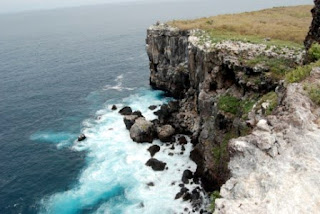Early this morning, Ally’s dredge produced one of the largest quantities of rocks in a single dredge this trip. After that, the Melville traveled to Wolf Island, where it was stationary as the GPS system placed on the island was recovered. The GPS was placed two days ago on the island, in the same place as it was in 2002. Also, Eric had placed a gravimeter there at the same time, and brought it back to run a second test during the recovery today. What is significant about his gravimeter is the precision it is capable of, with the side effect that as many variables as possible must be controlled for. For example, Eric placed his gravimeter when the tides at the island were the same today as they wre 2 days ago. Meanwhile, the Melville encountered a commercial diving boat, the Galapagos Sky, which, after its diving trip, had some of its crew members come aboard and tour the Melville. After the GPS was recovered, the Melville began traveling east to its next dredge site, the Cheerio, about two hours away. Following this, the ship will head north to the ridge, where a towcam will occur, as well as a dredge, at Gretchen Swarr’s dredge site, The Tea Cup.
In other news, the undergraduate scientists are beginning to discuss with the senior scientists their ideas for their research project. This is, by no means, a final decision; however, after all of this time on the boat and in class, it is more of a survey to learn what we, the students, find interesting.

The cliffs on the large caldera.

The entire large caldera. There's the Galapagos Sky!

The smaller caldera.


The entirety of Wolf Island!







The Galapagos Islands are the most incredible living museum of evolutionary changes, with a huge variety of endemic species (birds, land and sea animals, plants) and landscapes not seen anywhere else.
ReplyDelete